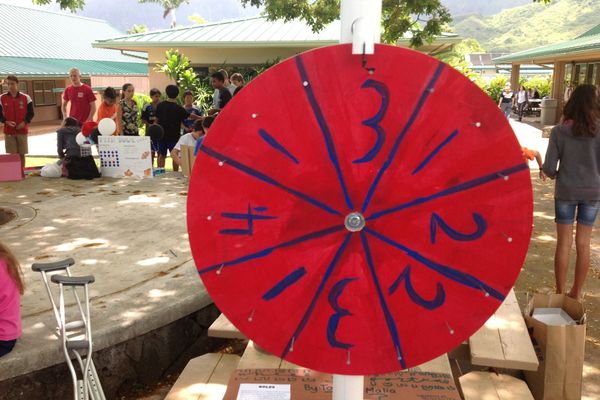Design a probability game
Create a spinner and colored counters to play a probability game, predict outcomes, record results, and compare expected versus actual probabilities.



Step-by-step guide to design a probability game with a spinner and colored counters
Probability - How Can You Use Probability In A Dice 🎲 Game | Probability Of Rolling Dice | BYJU'S
Step 1
Draw a circle about the size of your paper plate on the cardboard or on the paper plate using your pencil.
Step 2
Mark the exact center of the circle with a dot and draw two straight lines that cross at the center to divide the circle into 4 equal sections.
Step 3
Color each of the 4 sections a different color using your coloring materials.
Step 4
Write the name or a number for each color in its section so you can tell them apart easily.
Step 5
Put a paperclip flat on the center dot of the circle.
Step 6
Push the pencil tip through one loop of the paperclip so the paperclip can spin freely on the pencil.
Step 7
Gather 30 small counters and put them in a pile; make sure the counters are easy to move and count.
Step 8
Predict the expected probability for each color and write your prediction in your notebook (for 4 equal sections each is 1 out of 4 or 25%).
Step 9
Spin the spinner 30 times and after each spin place one counter on the color the spinner lands on.
Step 10
Count how many counters are on each color and write those counts in your notebook.
Step 11
Calculate the experimental probability for each color by dividing each color count by 30 and write the results as fractions and percentages.
Step 12
Compare your predicted probabilities to the experimental probabilities and write one sentence about which colors matched your prediction and which ones were different.
Step 13
Share your finished creation and your results on DIY.org
Final steps
You're almost there! Complete all the steps, bring your creation to life, post it, and conquer the challenge!


Help!?
What can we use instead of a paper plate, paperclip, or counters if we don't have them?
If you can't find a paperclip or paper plate, make the circle on cardboard, use a straightened bobby pin looped around a pencil or a pushpin through a bead as the spinning axle, and replace the 30 counters with coins, dried beans, or Lego studs.
Why won't my spinner spin properly or why does it stop quickly, and how can I fix it?
If the paperclip won't spin freely because it rubs the cardboard or the pencil wobbles, flatten the paperclip on the center dot, push the pencil tip through only one loop and use a toothpick or bead under the paperclip as a low-friction spacer so the clip can rotate smoothly.
How can I change the activity for younger or older kids?
For younger children, reduce the spins to 10, use bigger counters and help color and place the paperclip, while older children can increase spins to 100, record detailed fractions and percentages in their notebook, and compare predicted versus experimental results with a bar chart.
How can we make the game more challenging or more personal after we finish the basic version?
To extend the activity, personalize the spinner by making sections different sizes or adding extra colors to test biased probabilities, decorate the plate, run separate 30-spin trials to compare results, and post a photo and your conclusion on DIY.org.
Watch videos on how to design a probability game with a spinner and colored counters
Learn Basic Probability for Kids with Probability Games
Facts about probability and statistics for kids
🌀 A spinner's chance of landing on a color equals that slice's fraction of the circle — the bigger the slice, the higher the probability.
🧮 After about 30–50 trials you can start to see patterns, but hundreds of spins give much more reliable experimental probabilities.
🔁 The Law of Large Numbers says the more times you spin, the closer your experimental results usually get to the theoretical probability.
📐 Thomas Bayes helped create ideas (Bayes' theorem) that let people update probabilities when new data appears.
📊 Turning counts into percentages and plotting a bar chart makes it easy to compare expected vs actual outcomes at a glance.
How do you set up and play the spinner probability game?
What materials are needed for this probability spinner activity?
What ages is a spinner probability game suitable for?
What are the benefits, safety tips, and fun variations of this game?


One subscription, many ways to play and learn.
Only $6.99 after trial. No credit card required



